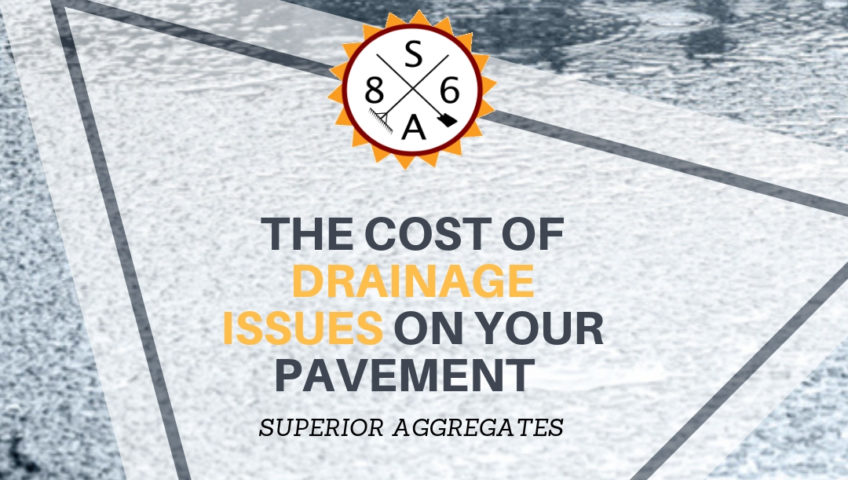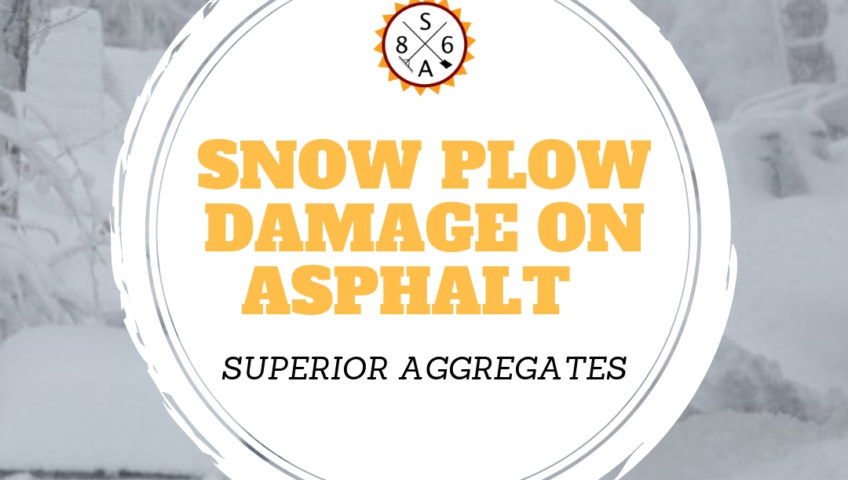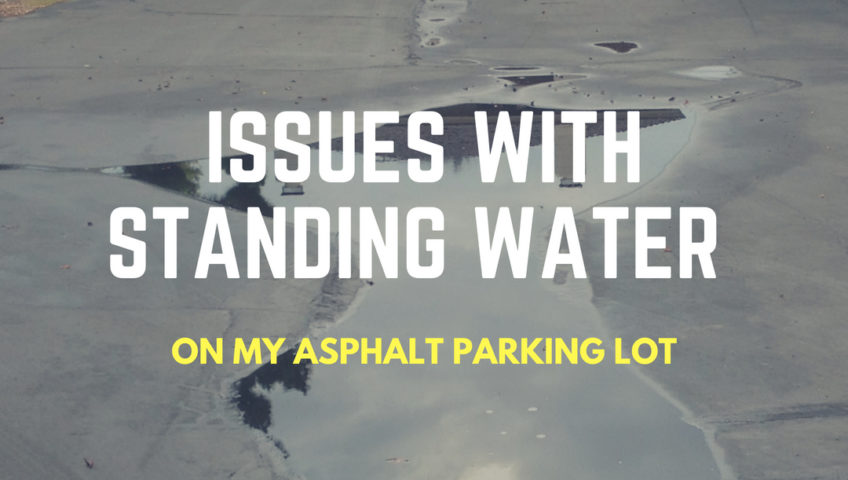
The Cost of Drainage Issues on Your Pavement
Pavements are important to our contemporary lives by providing a smooth surface onto which we can transport goods and people as well as communicate with each other. Therefore, it is important to keep your pavements in optimal shape. This can be achieved through proper drainage. It is considered the element that ensures a long lived quality pavement. Problems can occur due to moisture accumulation in any structural layer of the pavement.
Long-term problems can not only be caused by standing water from heavy rain or sprinklers but also from underground water, which is harder to detect. Cracks in the pavement provide a way for the ground water to seep into the parking lot from below the surface. Some of the drainage issues affecting pavements include;
Winter Liability
During winter months, your pavement can quickly fill up with ice formed by seeping groundwater. The people walking here may be in danger of injury resulting in liabilities for you and your business. It may also make it difficult to control a vehicle as hydroplaning can occur at speeds as low as 35 MPH.
Water ponding
This refers to the collection of water at deteriorated shoulders or pavements. Ponding can be caused by a backup in the drainage system or an insufficient cross slope. The pavement’s original cross slope can be affected by both maintenance and traffic activities. It is especially hazardous at intersections a driver will require greater distances to stop. It is also dangerous in wheel paths or ruts. Wheel ruts are caused by traffic, especially heavy truck traffic, resulting in bituminous pavement movement to the wheel path sides. They are noticeable and run parallel to the pavement’s centerline.
Ponding can cause drivers, pedestrians, or bicyclists to divert paths, often encroaching the opposing lane. This endangers their lives as well as the lives of opposing motorists. Ponding contributes to the rutting of stabilized soil and deterioration of the pavement edge resulting in additional safety hazards. Vegetation growth and debris build-up can cause shoulder to scour and edge drops when the pavement edge traps water.
Shoving
Occurring frequently at stop locations such as intersections, this pavement condition results in the pavement having a series of ridges running across it. These ridges are hazardous when wet and dry as they can retain water and cause a vehicle’s wheels to bounce respectively. This bouncing decreases braking ability and reduces the pavement’s contact with the wheels.
Issues with Maintenance
Sealers may not work as they should due to the water and leak impact on asphalt. Wet asphalt does not enable the adhesion of sealant. The sealant will re-emulsify and be easily tracked into stores or cars. You can experience difficulties in maintenance due to poor location, trapped debris, flat grades causing clogging of pipes, and low-flow conditions lacking self-cleansing velocities.
Long Term Damage
Standing water may result in structural damage which is long-term and costly. Lack of adequate maintenance can also result in long-term, costly damage. The weakening of entire areas will happen first, then falls and large cracks will occur. Not short-term fixes will be available for potholes.
Drainage issues can be hard to detect, but they result in some costly mistakes. You should strive to prevent the accumulation of these small issues before they develop into major problems.
Pavements are important to our contemporary lives by providing a smooth surface onto which we can transport goods and people as well as communicate with each other. Therefore, it is important to keep your pavements in optimal shape. This can be achieved through proper drainage. It is considered the element that ensures a long lived quality pavement. Problems can occur due to moisture accumulation in any structural layer of the pavement.
Long-term problems can not only be caused by standing water from heavy rain or sprinklers but also from underground water, which is harder to detect. Cracks in the pavement provide a way for the ground water to seep into the parking lot from below the surface. Some of the drainage issues affecting pavements include;
Winter Liability
During winter months, your pavement can quickly fill up with ice formed by seeping groundwater. The people walking here may be in danger of injury resulting in liabilities for you and your business. It may also make it difficult to control a vehicle as hydroplaning can occur at speeds as low as 35 MPH.
Water ponding
This refers to the collection of water at deteriorated shoulders or pavements. Ponding can be caused by a backup in the drainage system or an insufficient cross slope. The pavement’s original cross slope can be affected by both maintenance and traffic activities. It is especially hazardous at intersections a driver will require greater distances to stop. It is also dangerous in wheel paths or ruts. Wheel ruts are caused by traffic, especially heavy truck traffic, resulting in bituminous pavement movement to the wheel path sides. They are noticeable and run parallel to the pavement’s centerline.
Ponding can cause drivers, pedestrians, or bicyclists to divert paths, often encroaching the opposing lane. This endangers their lives as well as the lives of opposing motorists. Ponding contributes to the rutting of stabilized soil and deterioration of the pavement edge resulting in additional safety hazards. Vegetation growth and debris build-up can cause shoulder to scour and edge drops when the pavement edge traps water.
Shoving
Occurring frequently at stop locations such as intersections, this pavement condition results in the pavement having a series of ridges running across it. These ridges are hazardous when wet and dry as they can retain water and cause a vehicle’s wheels to bounce respectively. This bouncing decreases braking ability and reduces the pavement’s contact with the wheels.
Issues with Maintenance
Sealers may not work as they should due to the water and leak impact on asphalt. Wet asphalt does not enable the adhesion of sealant. The sealant will re-emulsify and be easily tracked into stores or cars. You can experience difficulties in maintenance due to poor location, trapped debris, flat grades causing clogging of pipes, and low-flow conditions lacking self-cleansing velocities.
Long Term Damage
Standing water may result in structural damage which is long-term and costly. Lack of adequate maintenance can also result in long-term, costly damage. The weakening of entire areas will happen first, then falls and large cracks will occur. Not short-term fixes will be available for potholes.
Drainage issues can be hard to detect, but they result in some costly mistakes. You should strive to prevent the accumulation of these small issues before they develop into major problems.




